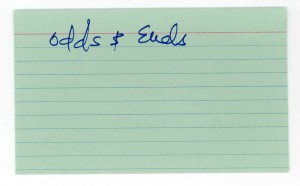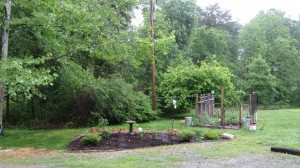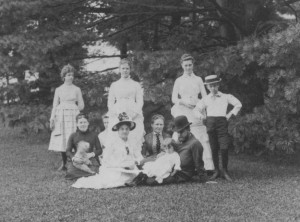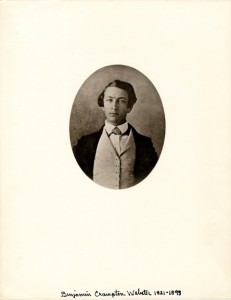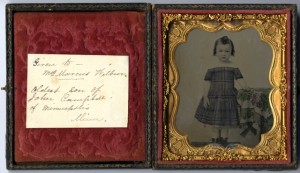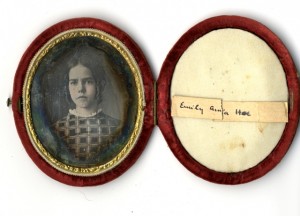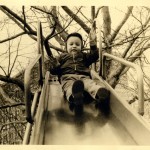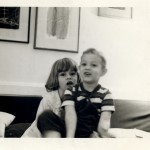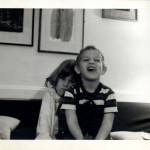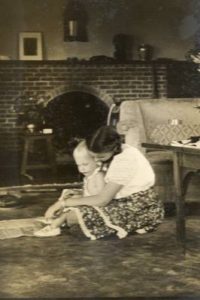
Audrey and child, Avanti living room floor, c. 1945?
Barbara Carlson and I have been indulging in memories of Avanti, Gioja and Ben Webster’s home on Byrdcliffe in Woodstock, N.Y. Our email exchange has been pretty wonderful and I’ve just decided to copy it here for the readers who will also remember. Ping back on the comments section if you wish. As Barbara says in the end, this feels cinematic.
Here goes!
Note 1:
On Sat, Jul 23, 2016 at 4:55 PM, Mary Prevo <maryaye@icloud.com> wrote:
July in the Garden
Here is an essay I wrote several years ago, but my visit to you reminded me of it and I wanted to share.
Love,
Mary
Reply 1 from Barbara:
Such lovely musing on the Gioja days and wandering through Avanti (in my memory). I learned from her to a little, not very much. I especially love the part where you walk through the house to check on ALL the bouquets in all the rooms…!! So lush! Mmmmm. I must remember to do that.
Where did I learn? Hmmmm. The Aunts and Grandma by osmosis… My Japanese sensei taught me important things, as did my friend in the flower business, and the great old paintings like the one you have in your essay….they taught me lots. I really love mixed flower bouquets, but as you say they want looking after closely as days go by…the different characters give up at different rates ~ so mustn’t delay water changing and re-clipping. The paintings I always loved the most are the trompe l’oeil ones with those water droplets you’d swear are real. And those huge old cabbage roses!! what absolute glory. I keep telling myself to paint up some art for the house — it would be sooo fun. I want to try some grisaille then glaze my way into Heaven. And also I keep telling myself to get a cut flower garden going for heaven’s sake. What can I be thinking, not to do that.
Thanks for sharing that yummy essay, so cozy as well as everything else.
xoxo
~ Barbara
Actually I learned a great lot from Gioja…but she was so UN-didactic I didn’t feel it!
~ Barbara
Reply from Me:
Thank you for reading my essay and responding. Every once in a while I’m overcome with one of these and just write them down – bang. And Avanti in the high summer – hot as blazes outside and all the curtains shut against it inside and the smooth dark wood floors cool – a slight smell of wood smoke and tobacco – scratchy kilims on the couches – bare legs and feet. . . The smell of tomatoes ripening on the vine from the little kitchen garden by the back steps . . . the huge spider who lived in the stone wall . . . summers in Avanti . . . of me all done by the time I was 7 or so.
Mary
Reply from Barbara:
Yes and yes and yes…the Avanti Days. I adore your memories. I inhale them like fresh rampion, impressions from all your senses….and boy do they resonate.
I spent lots of time at Avanti when I was quite young- 1-12 I’d say mostly. I remember all you describe so very well. The floors. Well waxed. Their creaking. The grandfather clock chime — and since then all other chimes seem so wrong because they are not the deep boom, the proper sound. (What’s the matter with those awful high pitch chimes?!) The ship rope on the stairs. Those commodious stairs, so lovely to walk. Carey Pal was living at Avanti, washing dishes and painting cats and horses. There’s a book right there. Kookachin was making babies as fast as she could and giving birth behind the old black stove. ‘Nother book. Audrey was a spirit I seldom saw but heard references about. She was so beautiful I remember. Meemoo was always somewhere “around” in those early days. Dita was ever present – and ever arguing with Papi. I spent lots of nights with LW in all the various bedrooms she inhabited – which means all of them except Papi and Gioja’s winter bedroom (warmer over the library) and summer bedroom (over the porch and colder). I watched Gioja paint using a rose color all shot with silver or gold. The inside of the vanity drawers and her nails — both. Her glamorous bathrooms. Her nails were always done beautifully. I remember her giving me her spool drawer from the sewing table – to re-arrange. I was sick in bed at the time. And her Hauser board in the Middle Room. The platform in the Middle Room and all its myriad purposes…Gioja sunbathing on the roof, hair in clips and kerchief in place – with style. I vividly remember martinis in the Library preceded by wisdom, humor and cursing dispensed, most fascinating, in The Bar! The Howdy Doody show with Coke and potato chips!!! on that scratchy kilim in the Hall. The HUGE basket in the Hall, full of hats and mittens and such. Rare, solemn visits with proper behavior in the Living Room. Salads in the kitchen. La Marche a la Soupe. Tomatoes in that little garden. Laundry sunning on that line. Mrs. B. doing so many things….apple butter that lived in that glorious pantry! Soft butter on our soft toast.
Hand-feeding Snowflake, Lawrence’s baby goat, with a bottle. (Intense) Discovering the “secret” back stairs up or down- that led to another universe, but you found your way back through the bathroom hand painted by Carey Pal. Her bedroom was very exciting to sleep in during a cocktail party ~ you could hear and spy so well from her west window. People came in The Front Door of all things.
Each of these is just a little finger pointing to the great full moon of body-memories. Some are so faint, but there is an undeniable recognition. A re-cognizing. The library of memories is a place that I go carefully. Like the Avanti Living Room it’s not the thing to go flying in there…instead enter with care.
On and on I could go. Winter, Spring, Summer and Fall …. I might wear you out. This stuff is built into you, of course. The Webster Family is part of my DNA, I’m sure of it. It’s treasure to revisit these places, but it’s altogether different to have a listener who gets it. You get it perfectly and in a way that’s particular to you. Lawrence, for example, gets it in another kind of way. Such a patchwork quilt.
XOXO
~ Barbara
Me again:
Yes floor wax. And two attics with a secret passage and room between them. And costumes in trunks. And the screen porch. Never had to tip-toe there. unless Papi was listening to the radio. Merry-go-round horse on south porch. Gumma’s bathroom – lipsticks open. Yes. Raised nook in middle bedroom. Tent bedroom. Great bathtubs with old fashioned taps. All of it. The bar. The decopaged door in the library. The pantry. Etc.
Barbara again:
Man, I wish I could be a cinematographer to capture all that. The world in the attics! omg as they say. The texture of the wood on the outside of the house — and the inside too. I feel it now and smell it. The Tent Room! Many years later I copied that tent, in pinks and purples…it was SO fun. Such an imaginative thing, thank you for the millionth time, Papi. One time, although I was not there, Lawrence had a snake climb up the vine, and arrived outside the Tent Room window. I think it was small and perhaps green? Anyway it was a huge to-do. So scary! (Lawrence corrected this. It was a big snake and Papi had to kill it. And I, Mary, remember being told it was a rattlesnake.)
The blanket closet: a world of its own. A landmark. Like the Lincoln Memorial or something. It was quite tall so a person could fit inside pretty easily if they wanted to. I never did. And its height made it a station to Put Things Sometimes. I think I remember a lamp up there. Gioja’s bathroom was always a luxury of towels – that I remember clearly. And they were smoky greys and browns. Dita went aqua all the way, and I spent Very Much Time at Dita’s too. Just her and me. She seemed to take each of the kids one at a time and civilize them. Its harder to civilize people en masse, especially in the Cookie House, but one at a time it was manageable and for me a pure delight, quite magical. Her house was fascination itself.
The horse on the porch…(where did that go??) Quel magic. And other animals, the dancing bear on the wall in the Hall, string to pull. Caleb and the Friendly Animals (that I have here in my house now). All the creatures that flowed from pen and brush in Gioja’s hand, in the same spirit as her ancestor…the Creatures of Avanti from La Marche a la Soupe to Kookachin to Zekie to Jenny, Chipper and his snappy touchiness. You learned to give him all the birth he wanted, but otherwise disregard. I think Chipper was fair though. He didn’t pick fights with people. Gioja was always going to knit a sweater with his clippings. And the march of the poodles. A better historian than I could recite all the names in order — Cheops and on and on…I bet you can recite them all, and might be the only person besides Gioja to ever do it. She picked the non-shedders with curls. Good choices.
I spent tons of time in the garage/barn, first with Jenny, and then when Lawrence got a horse – Granite, then later Sapphire. I think she hurt her leg or foot and I was conscripted to clean the stall- an undertaking and it seemed impossible. But trudge trudge trudge and eventually you got there. I remember where I dumped the wheelbarrow in the manure pile east of the driveway. It was a sprawling pile because you couldn’t get up on top of it in any way.
Somebody manifested a cart when Jenny had arrived. I think Gioja must have helped hitch up Jenny, but I don’t think Jenny was very used to any of that…Lawrence and I got her hitched up one time and she ran away with the cart and Lawrence in the cart but no reins or control! It was so scary but I howled with laughter. It was a moment where you knew this could be roughs but somehow I felt it wasn’t life threatening. Terrible to see them disappearing down the road toward the Post’s house at a dead run. yet no wreck or injury. I followed on foot and all was well. That donkey ran away all the time. You just had to wait it out. Plus she bucked us off incessantly! I spent so much time picking myself up off the ground. It was routine. It was the nature of our relationship. And in between times I traveled miles and miles on Jenny, steering with a twig because bits and bridles did not apply.
Summer bee balm! Goldenrod and black eyed Susans. Walking down through the field of it to Eileen’s. The dark mystery and spare beauty of those barns. I understood them even as a child. The fields to the east of the barns had lots of star moss and were much gentler fields than the Avanti field. I guess we often walked the woodsy road down to Eileen’s now I think of it, because— well— bees and things. The road was safer.
End of riffing for now…too much coffee girl has to do outside chores before its 100º.
Love,
~ Barbara
Editor’s note: The Merry-Go-Round horse that used to be on the south porch is in the Woodstock Library.
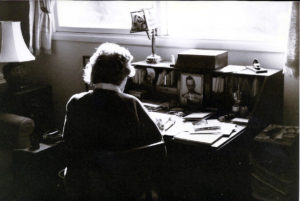
Gioja at her desk, 12 Elwyn Drive, Woodstock, c. 1985ish
